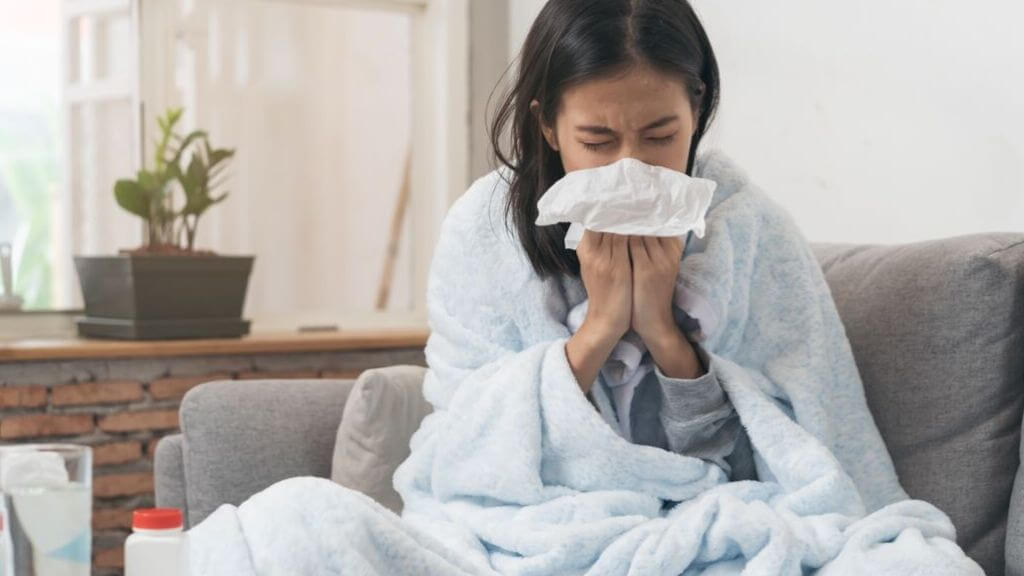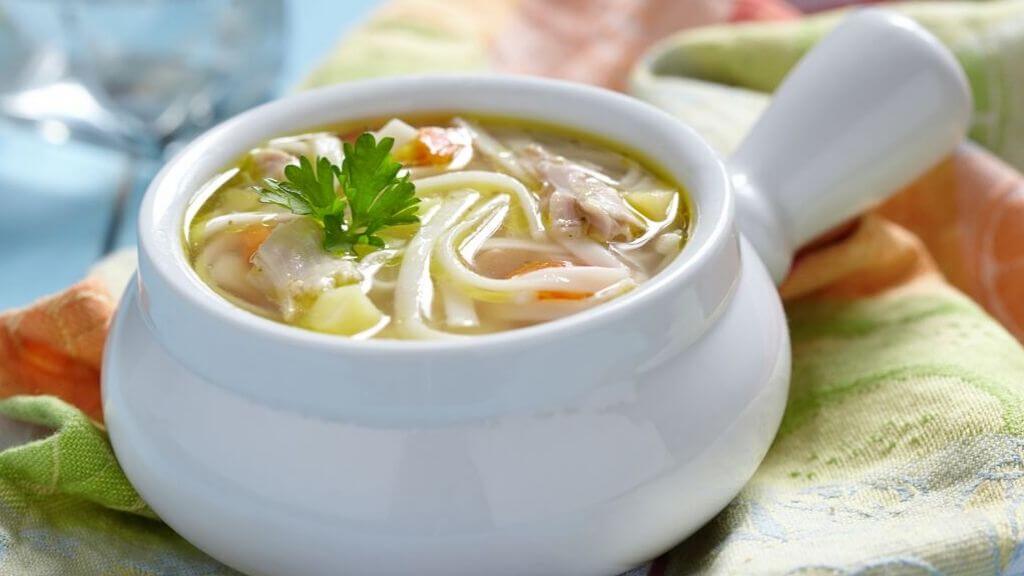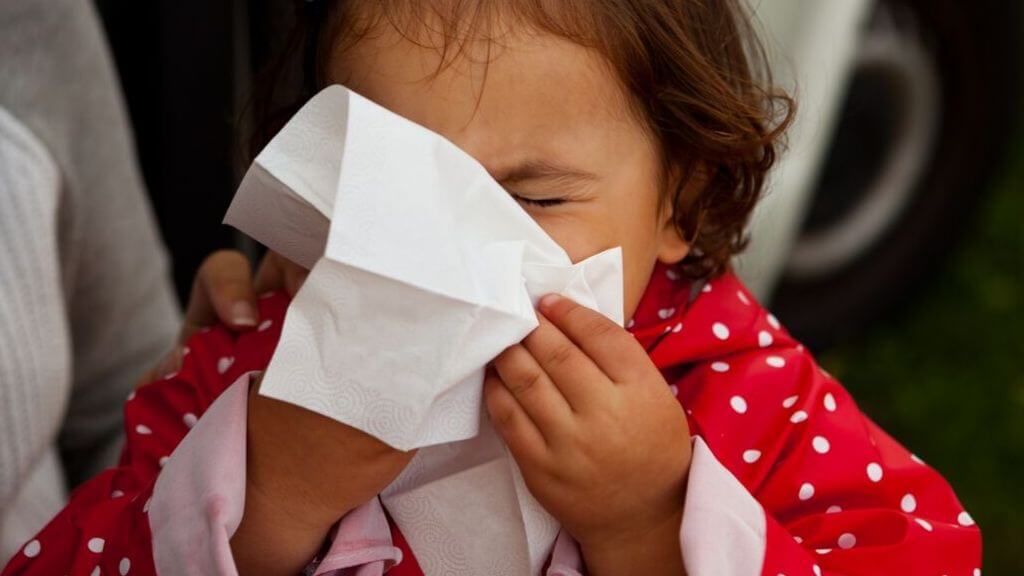A cold is a respiratory illness caused by a virus, and it is common for healthy adults to catch a cold a few times each year. A cold is different from the flu despite having similar symptoms.
In general, symptoms of the flu are more severe, and different viruses are responsible. Colds also do not cause more serious complications, whereas the flu can lead to pneumonia and sepsis. Common colds also have a faster recovery time.
Causes of the Common Cold
Rhinoviruses are the most common type of virus that causes colds. They can be easily spread from person to person and across surfaces. The virus can live for several days, leaving surfaces infected long after the infected person has touched it.
The virus has to make its way into your eyes, nose, or mouth to make you sick, so regularly washing your hands can help protect you from catching a cold.

Common Cold Symptoms
The symptoms of a cold will typically appear a few days of exposure to the virus, and they appear suddenly. The symptoms of the common cold include:
♦ Congestion
♦ Sinus pressure
♦ Runny or stuffy nose
♦ Sneezing
♦ Postnasal drip
♦ Sore throat
♦ Headaches
♦ Cough
♦ Chills
♦ Fatigue
♦ Body aches
Diagnosing a cold does not always require a trip to your doctor. If you suspect the flu, you should visit your doctor to have it ruled out. Once you know the symptoms of a cold, you can diagnose yourself.
Visiting your doctor is usually only necessary if symptoms persist or get worse. Most colds work their way out of your system within ten days, but this can be longer or shorter depending on your overall health.
Treatment for Common Cold
The most common treatment for a cold is over the counter medications. While these do not attack the virus, they help to reduce your symptoms, so you are more comfortable.

Decongestants help to relieve congestion so you can breathe easier, and antihistamines ease runny noses and sneezing. Pain relievers are also used sometimes. Generally, you can find an all-in-one “cold” medication that includes an assortment of these medications that help ease multiple symptoms at the same time.
Common Cold Diet
The old wives' tale suggests that we “feed a cold,” and this is true. As your body fights the viral infection, it will require more energy, which means you need to eat more. The cold often causes a loss of appetite, so you can opt for smaller and lighter meals to keep your energy levels up.
Chicken noodle soup is a classic food option for the cold, and it combines warmth, broth, and nutrients to encourage faster healing. Yogurt is also recommended because it increases the bacteria in your gut, which supports your immune system.
Natural Treatments for Common Cold
The best natural treatment for colds is rest and hydration. As your body fights the infection, it uses up large amounts of energy, leaving you tired and drained.
Resting is necessary, so your body can recharge and continue to fight the virus at full strength. Without rest, your immune system can still fight a cold virus, but it will take longer, and symptoms will not pass as quickly.

Staying hydrated is essential as it helps to break up congestion and prevents hydration, which is common with colds. Clear drinks like water are best, but you can also enjoy warm broths, teas, or even warm water with honey and lemon.
Warm liquids are both soothing and help to break up mucus to clear your airways faster. Adding moisture to the air using a dehumidifier also helps to break up congestion so you can breathe easier.
A common misconception for colds is to take antibiotics, but these do not work. Colds are caused by viruses and not bacteria, so these medications are not useful. They do more harm than good, by wiping out the beneficial bacteria in your body.
Good bacteria help support your immune system, so when they become unbalanced, your immune system is not as strong as it should be, meaning you cannot fight off a cold as well as you should.
Common Cold Facts
♦ There are over 200 different viruses that cause the common cold, with rhinovirus being the most common.
♦ Adults, on average, get between 2 and 4 colds per year, while children get between 6 and 8.
♦ Cold symptoms can last up to ten days, but in healthy individuals, they disappear quicker.
♦ As children develop resistance to the different viruses, the number of colds they get per year decreases.

Common Cold and Children
Children can develop colds just as adults do. The symptoms are the same, but many over-the-counter medications are not approved for children under the age of 6. This means cold symptoms in children need to be treated more naturally.
Keep children hydrated, and allow them to get plenty of rest. They should refrain from regular activities until the virus has passed. Soups and taking warm baths can also help fight aches and decongestion.
What Is the Long-Term Outlook?
The common cold is not as severe as the flu, and symptoms will pass. The speed with which you recover depends on your overall health and how well you address the symptoms. There is no need to see your doctor unless your symptoms get worse or you think you may have the flu.
With rest and care, a cold will pass without causing any serious complications. With regular physical activity, a balanced diet, and healthy lifestyle choices, you can promote a strong immune system and reduce the severity of any cold.






